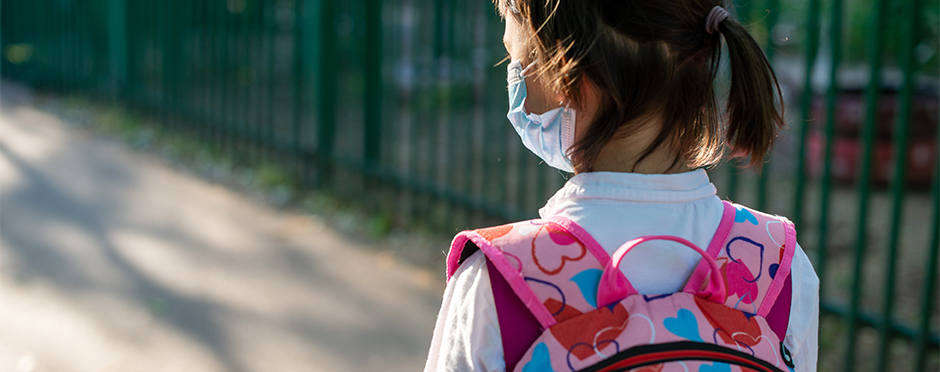
Ask a PT: How to Properly Fit a Backpack
Leave a CommentAs students have returned to school this semester, either learning onsite at school, learning remote at home, or in some form of a hybrid model, several changes must be made. Some of these include early wakeup, a longer commute, more formal dress code, and the return of carrying books and supplies in a backpack. While some of these changes may be difficult to adjust to, the least difficult, wearing a backpack, can occasionally be the most painful. Luckily, many schools are seeing an increased trend toward online books and tablets to minimize the carrying of heavy textbooks and supplies. If your child does have to wear a backpack, here are some helpful tips for backpack fit and wear.
1. Ensure proper backpack fit
Just like a good pair of jeans, a good backpack must fit well, and in fact, the most important factor to avoid backpack “aches” is to ensure a proper fit. Foremost, purchase a backpack according to your child’s size. Toddler to high school age backpacks are readily available. It’s important to avoid an oversized backpack that enables your child to carry more weight than their size or strength can physically handle. Secondly, adjust the pack tightly against the back so the load is closer to their center of gravity. Cinch shoulder straps snugly to avoid pack hanging below waist level. Furthermore, a sternum or waist buckle, often found on backpacking packs, and occasionally larger school packs, are beneficial components to ensure a secure fit. When a heavy pack must be carried, consider investing in a hiking or travel specific pack, which often comes with laptop sleeve and cellphone pockets. This can be worth the extra cost to prevent any aches and pains. Backpacks that fit children to adults with attachable sternum straps can be found online or at stores like REI, Sierra Trading Post and luggage sites.
2. Carry backpack with straps over both shoulders
Wearing the backpack with straps over both shoulders has two advantages – ensuring a secure fit and avoiding uneven weight on the back and shoulders. In fact, wearing both shoulder straps prevents uneven loading which can result in muscle pain and imbalances.
3. Avoid overloading backpack
Carry a backpack with heavier items toward the center and the least amount of weight as possible. While heavy textbooks can complicate this advice, try completing work from larger books while at school, storing books not required during the school day at home.
4. Maintain good posture
Stated differently, avoid sinking into a compressed posture or simply do not slouch. While this advice may transport you back to your school year days and a similar admonishment from a well intention parent, this helpful “nagging” can be a lifesaver for preventing unnecessary back pain. Phrases such as “stand tall” and “pretend a string is pulling you up by your head toward the ceiling” may be more acceptable reminders for younger students.
As fundamental as calculators and pens, a well-fitting backpack is an essential school supply. Finding a suitable, well-constructed backpack avoids unnecessary back pain and strain, guarantees a secure fit, demonstrates a high level of intelligence and may, like school, require a little extra time and research to earn an A+.
Join us in celebrating National School Backpack Awareness Day on September 16, 2020. The national holiday organized by the American Occupational Therapy Association educates students, parents, educators, school administrators, and community members on safety tips to stay protected from back pain and injury that can come from heavy backpacks and bags.
These tips can help your student return to school pain-free! If you begin to have neck or back pain, contact an Athletico clinic for a free assessment. Assessments are available in clinic and virtually through our telehealth platform.
The Athletico blog is an educational resource written by Athletico employees. Athletico bloggers are licensed professionals who abide by the code of ethics outlined by their respective professional associations. The content published in blog posts represents the opinion of the individual author based on their expertise and experience. The content provided in this blog is for informational purposes only, does not constitute medical advice and should not be relied on for making personal health decisions.
